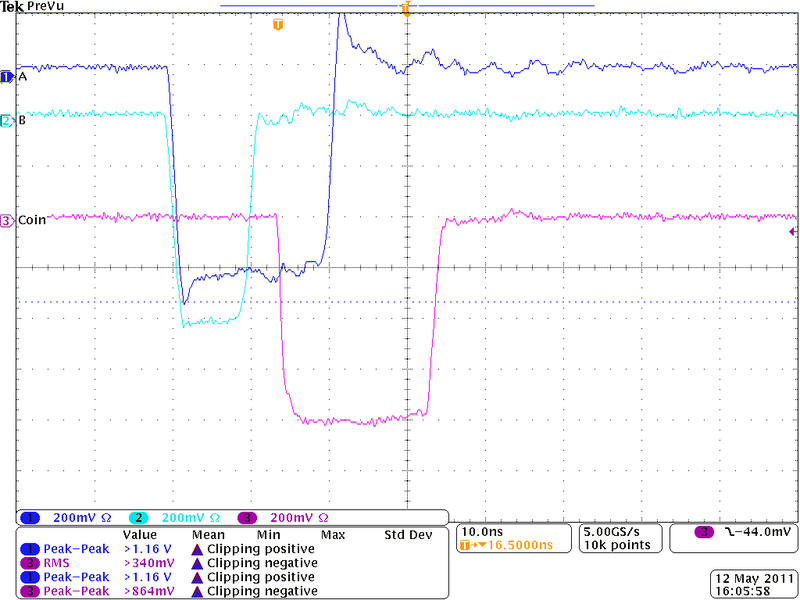05/12/2011 random coincidence cosmic test
Jump to navigation
Jump to search
The powers are:
PS1 and PS2: -1000 V (the old 2-channel TENNELEC TC952) n's: -1100 V (the new 2-channel C.A.E.N N471)
The thresholds are:
PS1 and PS2: -80 mV n's: -200 mV
The discriminator widths are:
PS1: -20 ns PS2: -10 ns n's: -20 ns
Let's do the random coincidence cosmic ray test 1.
PS1 and PS2 is about 30 cm away from each other. And let's look on the coincidence signal between PS1 and PS2:
| total counts | time | counts/min | counts/sec | |
|---|---|---|---|---|
| PS1 | 70 min | |||
| PS1 | 70 min | |||
| PS1+PS2 (30 cm away) | 70 min |
And below my scope pictures of this rear event:
Let's do the random coincidence cosmic ray test 2.
But now the distance between PS1 and PS2 is about 5 cm. And let's look on the coincidence signal between PS1 and PS2:
| total counts | time | counts/min | counts/sec | |
|---|---|---|---|---|
| PS1 | 70 min | |||
| PS1 | 70 min | |||
| PS1+PS2 (5 cm away) | 70 min |
And below my scope pictures of no so rear event as before:
So what we are measured?
- purely random events from different reaction?. But why does rate depend from distance?
- some coincidences are sub-products of one reaction? (air showers). Now if detectors located closer to each other the rate should be higher because the detectors are closer to initial reaction.

